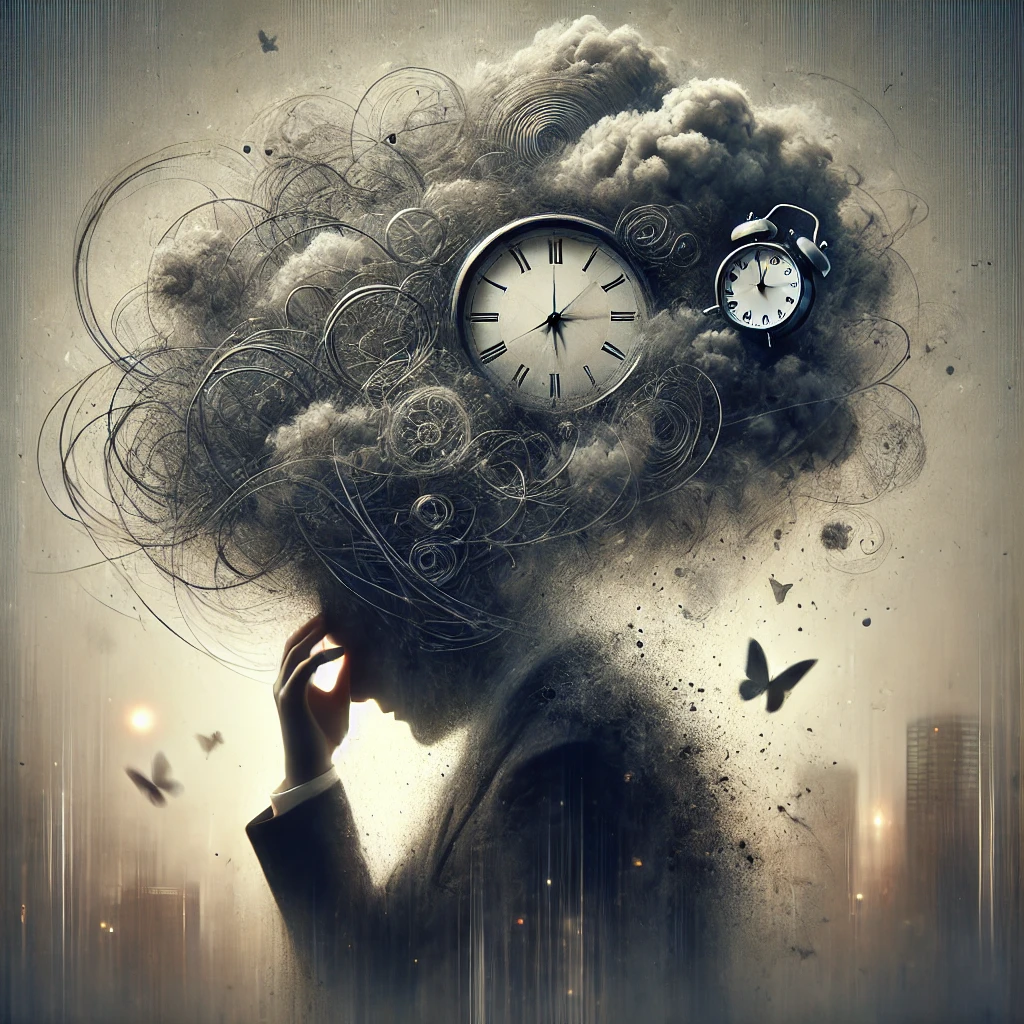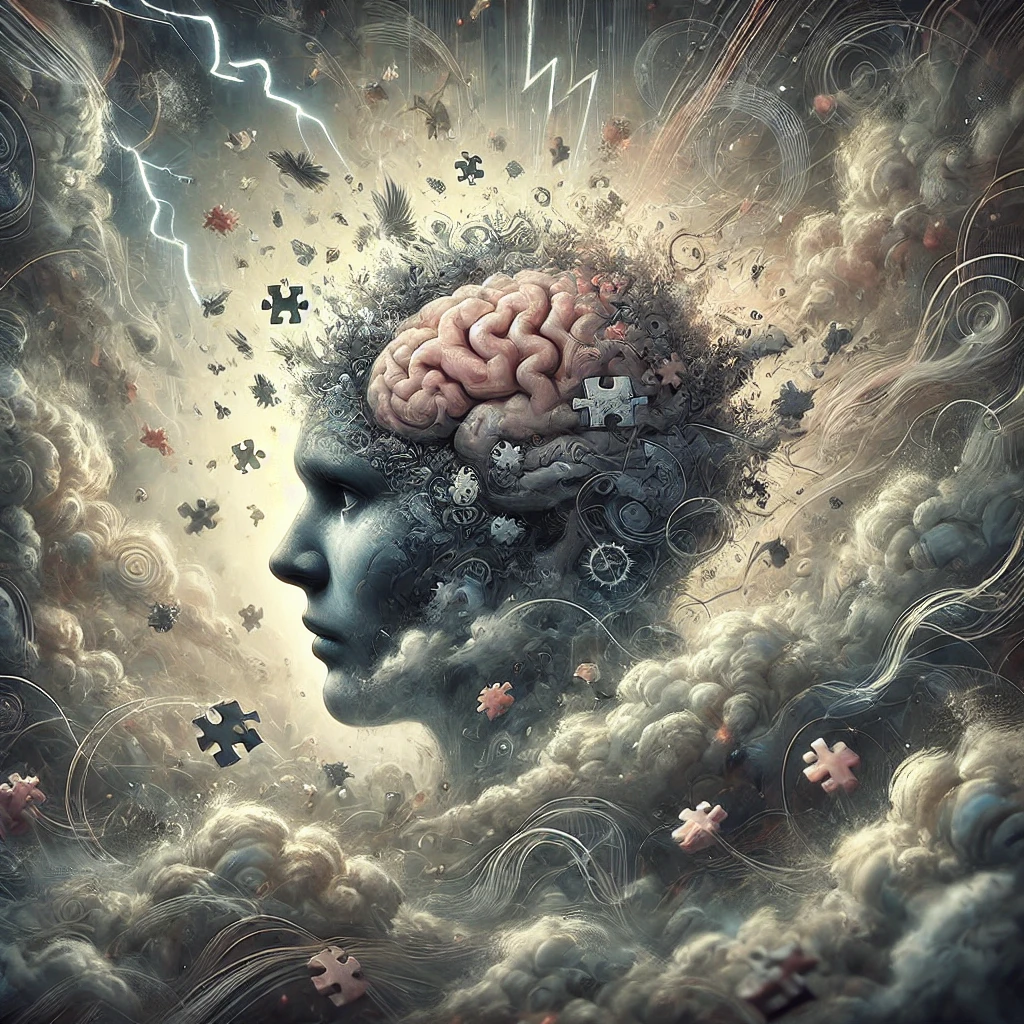Purpose of This Article
The purpose of this article is to gently and thoroughly explore the nature of visual disturbances that appear as sparkles, shimmers, halos, ghosted images, or heat-wave-like distortions when someone is under the influence of chronic anxiety and prolonged nervous system arousal. These unsettling but ultimately benign experiences are often misunderstood or feared, sometimes mistaken for more serious eye or neurological conditions. Here, we aim to normalize these occurrences, uncover their physiological roots in stress physiology, and offer clarity and reassurance for those who experience them.
It’s an alarming thing to witness—your visual field starts to ripple, shimmer, or fill with sparkles. Perhaps you notice a halo around light sources or strange shadowy trails following objects as they move. For some, it’s like watching the world through a pane of warped glass, or as if a heat wave is rising from the pavement right in front of their eyes. Understandably, this can feel terrifying. Is it your vision failing? A brain problem? Something serious?
Rest assured, these visual distortions, as unsettling as they are, are a very common part of chronic anxiety and long-standing activation of the body’s fight-or-flight system. The body is not broken—it is over-alert. And when the nervous system is in a state of sympathetic overdrive for extended periods, even perception can become affected. What you’re seeing isn’t a sign of irreversible damage, but rather an expression of your body’s heightened vigilance.
While these sensations can mimic serious ophthalmologic or neurologic conditions, in the context of anxiety and chronic stress response, they are usually harmless and temporary. However, due to their resemblance to conditions like retinal issues, migraines, or even signs of neurological disease, they understandably provoke fear. This reaction often amplifies the experience, creating a loop of fear and misinterpretation. But understanding the roots of these symptoms can start to loosen their grip.
How Do These Visual Disturbances Feel?
- “Seeing stars” or sparkles out of the blue: These might appear like tiny glittering flecks dancing in your peripheral vision or floating across your field of sight. They often resemble the twinkle effect you might get after standing up too fast, but in the context of chronic anxiety, they show up unpredictably.
- Shimmering or flickering patches in vision: This can look like a subtle, moving glitter or a sheet of transparent distortion rippling across part of your sight—like the air above hot pavement.
- Halos around lights: Light sources may appear to glow or radiate with a circular aura, especially disorienting at night.
- Shadowy “ghost” images that linger or double: After looking at an object and shifting your gaze, you may continue to see a shadow or echo of the previous image.
- Trails or afterimages when objects move: Moving objects may leave behind a fading trail, similar to a slow shutter speed effect.
- Heat-wave or mirage-like distortions: Vision might bend or shimmer subtly, like light distorted over a hot road.
- Brightness or contrast sensitivity: Lights might seem overly intense, or daylight might feel piercing.
- A vague sense of “something’s off” with your sight: Vision may not be blurry, but feel altered, artificial, or unreal.
- Flashes or flickers in the periphery: Quick blips of light can appear at the edges of your vision, especially when highly anxious or sleep-deprived.
- The “film” effect: A sensation of a thin film or haze over the eyes, making everything feel foggy or distant.
These symptoms are deeply uncomfortable, but it’s important to recognize that they do not point to your vision or brain deteriorating. Rather, they are a reflection of your nervous system sounding the alarm bell too often and too loudly. When the brain is flooded with stress hormones, the visual cortex—responsible for processing what we see—can become overwhelmed, leading to these misinterpretations of the environment.
Understanding that your body is reacting, not breaking, is the first step toward calming this visual turbulence. In the following sections (to come), we’ll delve into why these visual changes occur on a physiological level, and how recovery and regulation of your nervous system can begin to soften and eventually resolve them.
Let this be your reminder: you are not alone, and your experience—no matter how strange—is valid and understandable within the context of anxiety’s powerful impact on the body and mind.
How Anxiety Causes Visual Distortions Like Stars, Shimmers, Halos, Shadows, Ghosted Images, or Heat-Wave Patterns
A Symptom Born of Complex Interplay Between Multiple Body Systems
This category of symptoms—transient visual anomalies—is not caused by a single organ system but rather a multi-system disruption. The major systems involved are:
Primary System Involved: The Visual System (Ocular and Neural)
- The visual processing system is highly sensitive to changes in blood flow, neurotransmitters, and oxygen levels.
- Chronic sympathetic overactivation may lead to:
- Reduced peripheral blood supply, causing momentary retinal ischemia, resulting in stars or flickers.
- Increased intraocular pressure from adrenal vascular changes, producing halos and light sensitivity.
- Ocular muscle tension causing slight misalignment and ghosted images.
- Adrenaline-related pupil dilation altering light perception and contributing to halos or bright lights.
Secondary System: Nervous System Dysregulation
- Chronic overactivation leads to neuro-sensory hyper-responsiveness.
- This heightened state causes:
- Amplification of visual input interpretation, making normal light feel exaggerated or distorted.
- Overstimulation in the occipital lobe, resulting in flickers, shadows, or light trails.
- Disruption between visual and vestibular systems, creating wave-like or mirage effects.
Tertiary System: Cardiovascular and Circulatory Shifts
- Stress redirects blood flow from surface areas like the eyes to vital organs.
- This can cause:
- Temporary retinal hypoxia, leading to flashes or dimming.
- Vasospasms that disrupt retinal blood supply and cause sudden distortions.
Tertiary System: Muscular Tension and Postural Strain
- Chronic muscle tension in neck, shoulders, and jaw impacts blood vessels and nerves around the eyes.
- Results include:
- Transient distortions upon movement or postural changes.
- Heat-wave visuals and shadowing from compressed nerves or arteries.
Medical Advisory: What These Visual Symptoms Can Be Confused With
Visual disturbances can mimic many serious conditions. Always seek medical evaluation first.
Conditions That May Cause Similar Symptoms:
- Ocular migraines
- Retinal detachment or tears
- Macular degeneration
- Glaucoma
- Multiple sclerosis
- Transient ischemic attacks (mini-strokes)
- Seizure activity (especially occipital lobe)
- Panic attacks
- Diabetic or hypertensive retinopathy
- Thyroid eye disease
If no physical causes are found, anxiety and chronic stress response are likely contributors. In such cases, working with a mental health provider—particularly one focused on anxiety disorders—is crucial.
How These Visual Distortions Happen — In Summary
- Overactivation of the stress response diverts blood from the eyes.
- Neurochemical imbalance over-sensitizes the visual cortex.
- Tense upper-body muscles compress arteries and nerves serving the eyes.
- Adrenaline surges affect pupil dilation and intraocular pressure.
- Fatigued ocular muscles misalign images, leading to ghosting.
- Sudden blood pressure changes can create heat-wave or shimmer effects.
Reclaiming Your Vision, Restoring Your Calm
If visual distortions have left you feeling anxious, confused, or afraid—know that you are not alone. These symptoms are often the echo of a nervous system working far beyond its baseline. They are not dangerous, but they are signals that your body is stuck in overdrive.
If all medical conditions have been ruled out, what you’re experiencing is most likely the effect of chronic overactivation of your body’s stress system. And that means it can be reversed.
Our anxiety specialists are here to help. Whether you’re looking to understand these symptoms or you’re ready to move past them for good, we invite you to take the next step.
Book a free consultation today or schedule a session with one of our experienced anxiety therapists. Together, we can restore clarity—to your vision, and your peace of mind.


